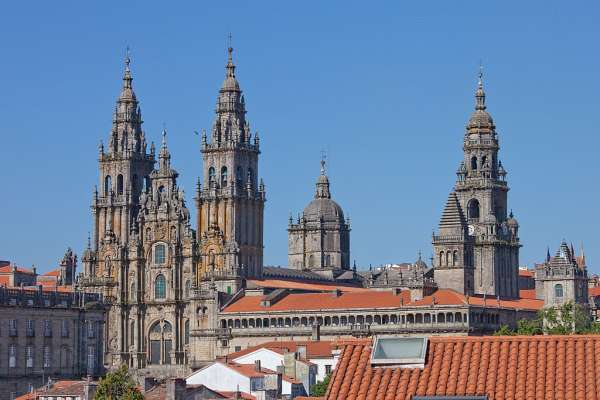The Jubilee Year in Santiago de Compostela offers the possibility of plenary indulgence

Compostela's jubilee year in Spain has been extended until 2021 and 2022, due to COVID-19 restrictions.
The tradition of the Holy Year in the Spanish city dates back to 1122, when Pope Callixtus II allowed a plenary indulgence to be granted to those who visit the city sanctuary of San Giacomo Apostolo in a year in which his feast of July 25 falls on a Sunday. .
The feast of San Giacomo falls on a Sunday in rotation every six, then five, then six, then 11 years. The last jubilee year took place in 2010, when around 100.000 pilgrims visited the shrine.
The Cathedral of Santiago de Compostela, completed in 1211 after over 135 years of construction, houses the relics of St. James in its crypt. It is also the end point of the Camino de Santiago, sometimes called "the Camino de Santiago", a centuries-old pilgrimage route consisting of a network of trails through Europe.
Callixtus II was a supporter of the pilgrimage and tried to promote it through his establishment of the Jubilee Years, during which pilgrims can cross the Holy Door of the cathedral.
The Holy Door was reopened on December 31, 2020, on the occasion of the inauguration of the Jubilee Year 2021 and 2022 by the Archbishop of Santiago de Compostela, Julián Barrio Barrio. He said in a statement that the Holy Year "is a time when the Church grants unique spiritual graces to the faithful."
The plenary indulgence associated with the jubilee year, which was recorded in the Regis Aeterni bull issued by Pope Alexander III in 1179, can be obtained for oneself, for a sick person or for a deceased person.
To receive the plenary indulgence, a pilgrim must visit the Cathedral of Santiago on any day during the Jubilee Year and meet the general conditions for receiving the indulgence, which are: sacramentally confessing one's sins, receiving the Holy Eucharist, praying for the intentions of the pope, and being interiorly detached from all sin